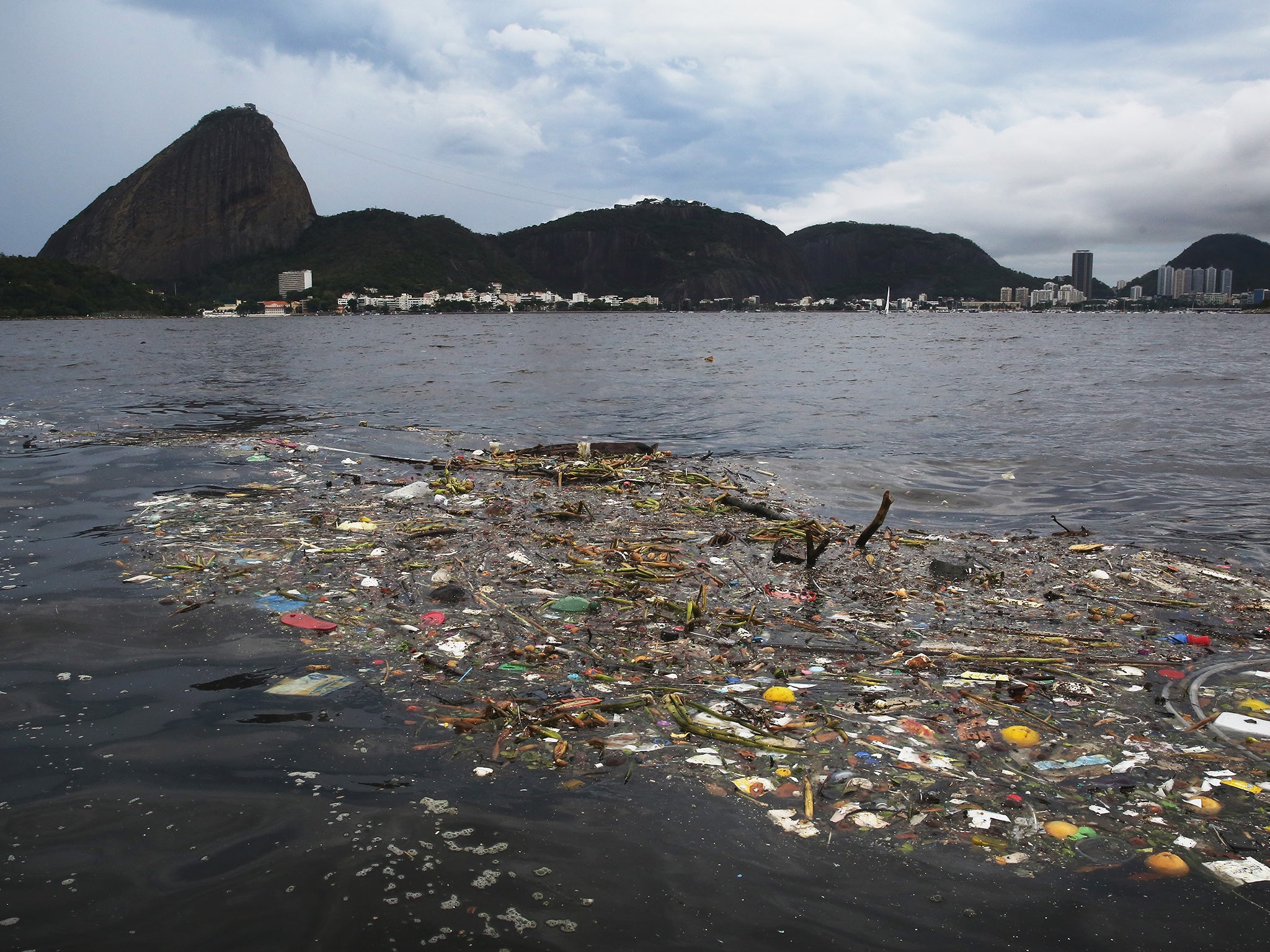Rio museum on Guanabara Bay tackles big environmental issues… but not the pollution on its doorstep
The 147-square-mile Guanabara Bay is inundated with raw sewage and tons of rubbish every day from low-income communities around it

It is a £36m vision of the future, a science museum in an Olympic city. Rio de Janeiro’s new museum, which opened last weekend, sits waterside in a port area that was left abandoned for decades, and is now being renovated with new office blocks, apartments and restaurants.
According to the museum, it uses sound, video and interactive exhibits to ask big questions about the origins, the present state and the future of humanity. But it neglects the shocking pollution in Guanabara Bay which it sits on.
“The essential concept of the museum is that tomorrow is not ready,” said curator Luiz Oliveira. “Tomorrow will be a construction. We will participate in this construction as people – Brazilians, citizens and members of the human species.”
To explain “where we came from” one room shows a film by Brazilian director Fernando Meirelles which crams billions of years of history into eight minutes. In an interactive exhibit that looks at “where we are going” visitors can calculate their own environmental impact based on their lifestyle. A section focused on the present day has towers of video screens showing environmental disasters.
Mr Oliveira pointed to a brief video clip on one tower that showed mud and mining waste spilling from a ruptured dam in Mariana, Minas Gerais state. Millions of gallons of waste were released into one of Brazil’s most famous rivers on 5 November, causing what has been called the biggest environmental disaster in its history. It is one of the few examples of Brazil’s own environmental problems on show in a museum concentrated on the universal.
The Earth area has an exhibit of images of ecosystems in Guanabara Bay. But a photo of a mangrove swamp resembles an image from a travel magazine – in contrast to the mangrove swamps in the Fundao Canal, a few miles away in the same bay, which are carpeted with refuse and are situated beside a stinking canal bubbling with toxic gases.
The 147-square-mile Guanabara Bay is inundated with raw sewage and tons of rubbish every day from low-income communities around it. Rio has had to build a fleet of “eco-boats” to pluck debris out of the water so that Olympic sailing races can take place. On a recent day, one was docked outside the museum, where rubbish floated on the water.
Officials admitted that other Brazilian environmental questions could feature more – such as deforestation in the Amazon, which appears in video clips and is included in interactive games in the Tomorrows area. “We are going to work on this,” said José Roberto Marinho, president of the Roberto Marinho Foundation, a non-profit group that developed the museum and is named after his father, who founded Brazil’s Globo media group.
“We are going to have an intense programme of debates” and programmes on the internet about Brazil’s environmental challenges, he said. “The museum shows that tomorrow is the result of what we are doing today.”
Brazilians want a better future. But to get there, experts say, they not only have to address serious structural problems, like the lack of sanitation and rubbish disposal that contribute heavily to pollution in Guanabara Bay – they also need to acknowledge them.
© The Washington Post
Subscribe to Independent Premium to bookmark this article
Want to bookmark your favourite articles and stories to read or reference later? Start your Independent Premium subscription today.

Join our commenting forum
Join thought-provoking conversations, follow other Independent readers and see their replies